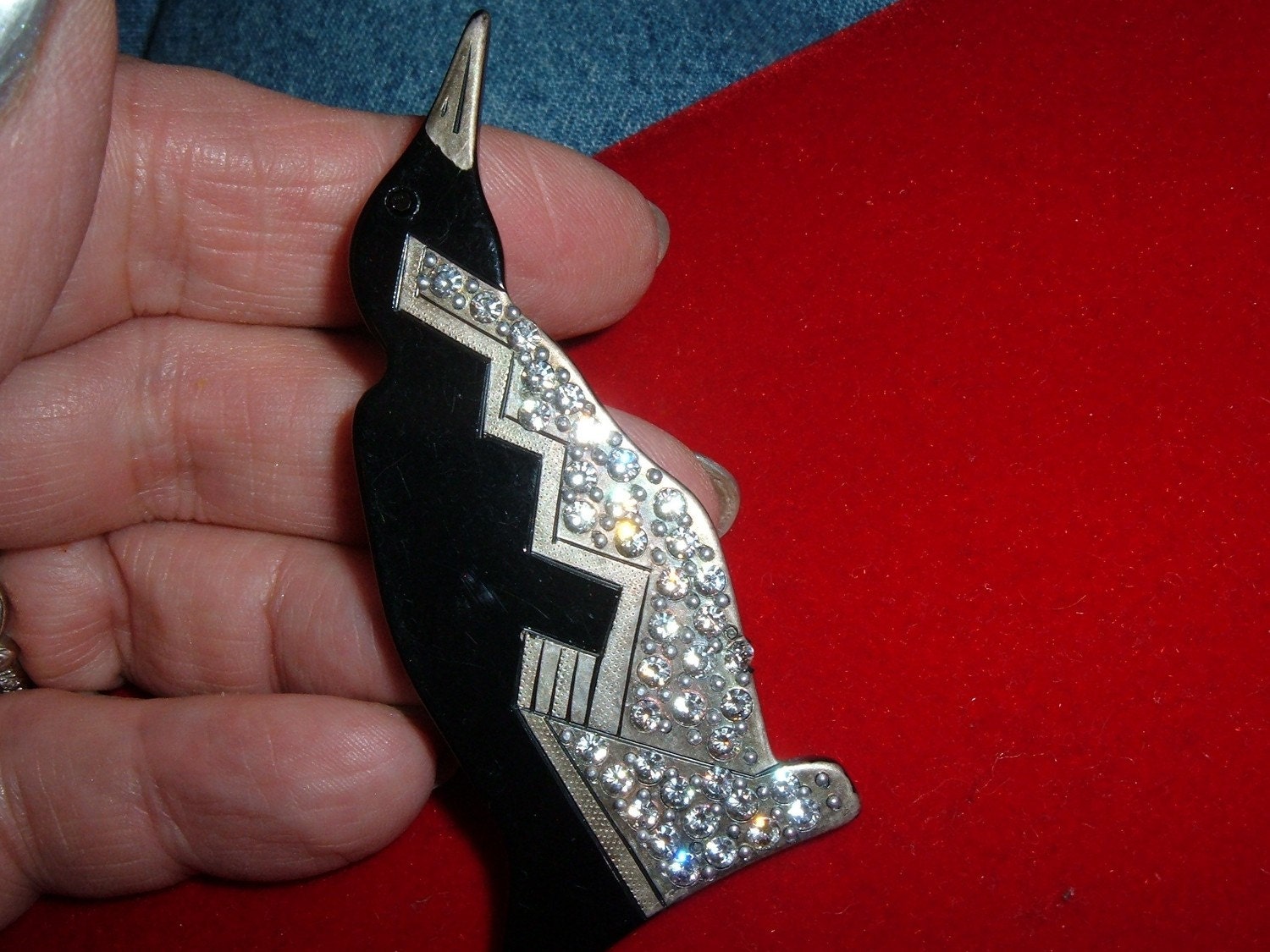 |
| Erik Magnussen, 'Cubic' coffee set or 'The Lights and Shadows of Manhattan', silver - Bing Images |
Art Deco began in 1910, following fast on the heels of the Art Nouveau movement. It was originally known as Moderne (and variations on that term). In fact, the term Art Deco wasn't used until 1966, long after the movement had fizzled. It reached its European peak in 1925 at the Exposition Internationale des Arts Decoratifs et Industriels Modernes, usually just called the "Paris Exposition." Its grand finale took place at the New York World's Fair in 1939, and the movement declined through the 1940s. We happen to adore the influence that Art Deco had in the world of jewelry and fashion. Cartier, anyone?
 |
| deleusejewelers.com |
Drawing influence from many art styles, including Cubism, and nations such as Egypt, Greece, Japan, and China, the Art Deco movement created a perfect balance between hard and soft. Tamara de Lempicka, one of the premier female Art Deco painters, managed to make silk look jagged, and her women appear both rugged and delicate at the same time.
 |
| echostains.files.wordpress.com |
The geometry of the art, paired with the use of precious metals, enamels, marble, and exotic woods, made Art Deco the ultimate representation of wealth and modernity. It was especially important in Europe and America, who suffered from two world wars and a major economic recession during the years of the movement. The style crept across both continents to establish itself as the grand ideal in architecture, housewares, clothing, accessories, and film. Manhattan became the poster child of Art Deco in America, which is clearly illustrated by the Chrysler Building, one of the most iconic architectural interpretations of the movement.
 |
| travelwithterrynyc.blogspot.com |
In 1929, the stock market crash resulted in a very necessary decrease in the usage of expensive materials, and ushered in the phase of plastic, aluminum, and chrome items. This phase of the deco movement also shows a transition from the harder, more geometric lines of the early years, to what was known as "streamlined" design. This was meant to represent the marriage of efficiency and luxury, despite the actual dollar amount in someone's bank account.
 |
| decophobia.com |
After World War II, however, the western world was struggling to recover from war-induced rationing, and Europe was desperately attempting to clear away the rubble of battle and rebuild. This directly caused the style transition from the luxe look of Art Deco to the more minimalistic streamlining that became the Mid-Century Modern movement. We say change is good, because Art Deco and Mid-Century happen to be our two favorite styles.
*What? Did we say that Art Deco didn't go to Antarctica? Then how do you explain this?!?!
 |
| http://www.etsy.com/listing/71532145/auguste-bonaz-30s-french-galalith-rare?ref=sr_gallery_7&ga_search_query=1930s+penguin&ga_view_type=gallery&ga_ship_to=ZZ&ga_min=0&ga_max=0&ga_search_type=vintage |
Information obtained from Craft Arts International. 2003, Issue 59, p84-87. 4p. 16



